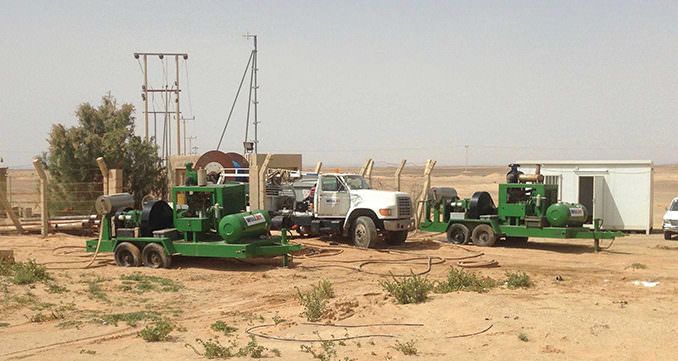Rehabilitating Jordan’s Phosphate Mines
Published on by Charles Carner, WellJet - Vice-President, Marketing & Business Development in Technology
How WellJet's sector-disruptive, best-in-class rehabilitation technology helped one of Jordan's vital industries recovery production and efficiency in a 21-well field.
By Jennifer Strawn

The need to properly develop, maintain, and rehabilitate water wells is essential around the world, but it’s most critical in arid environments like the Middle East where surface water is scarce.
In Jordan, groundwater is a major water source for its rapidly increasing population. In fact, in 2009 the nation constructed the Disi Water Conveyance Project, which pumped 100 million m3 (cubic meters) of water per year from the Disi Aquifer in southern Jordan.
The water from 55 new wells in the project was piped 200 miles to the country’s capital, Amman, where the population has more than doubled since 2004. However, there was not a significant increase in water supply availability.
“The company that drilled the wells was having trouble getting them to produce both the volume of water and the efficiency that the wells were supposed to provide,” recalls Charles Carner, vice president of WellJet in Camarillo, California. “The drilling fluid solidified, so they weren’t able to get it to break down and remove it.”
American consultants familiar with WellJet’s rehabilitation process suggested the company take a look at the project. To simulate the issues the contractors were experiencing in Jordan, WellJet built a model according to the specifications of the wells they were drilling in Jordan and clogged it with bentonite. Then, they sent a video demonstration of how their jetting tool could penetrate the gravel pack to break up the bentonite.
The patented WellJet uses highly pressurized water in a laminar flow to remove encrustation inside the well casing, open plugged perforations, and penetrate into the gravel pack to break up deposits impeding water flow.
Water jetting is not new, but it previously had limited value for well development and rehabilitation because it was difficult to generate enough pressure to have any effect on the deposits adhering to steel water wells or to maintain pressure downhole.
WellJet operations at the Eshidiya Mine Wellfield in Jordan. The mine is for phosphates, one of the leading exports of Jordan.
With the combination of pressures from 15,000 to 20,000 pounds per square inch and the ability to maintain that pressure 1000 to 2000 feet below ground, the WellJet tool solves both of those problems.
Read full article: Water Well Journal
Visit WellJet's website here
Media
Taxonomy
- Resource Management
- Water Resource Management
- Technology
- Environment
- Infrastructure
- Well Drilling
- Hydrology